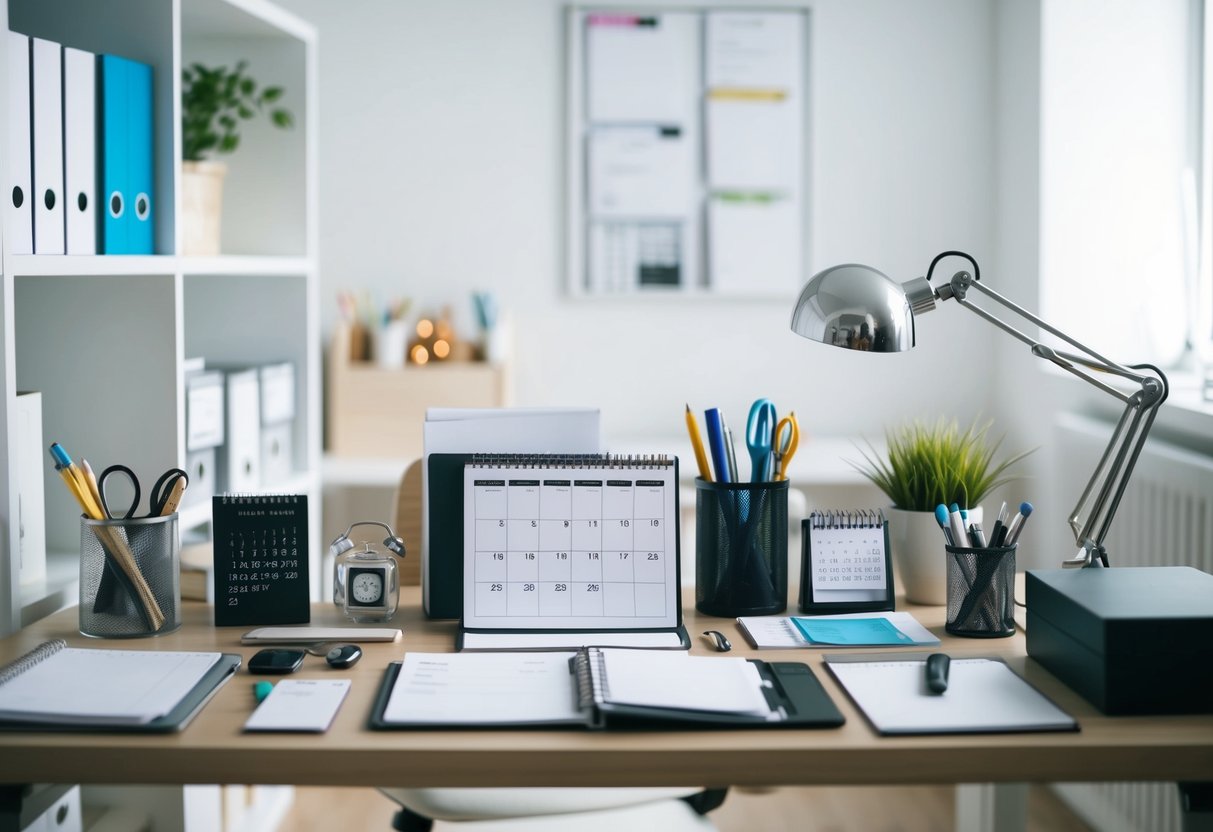Organizing Your Home Office for Maximum Productivity
Implementing Effective Storage Solutions
Organizing a home office efficiently involves utilizing various storage solutions to maintain order and productivity. Keeping office supplies accessible and documents well-filed reduces clutter and enhances efficiency.
Storage Options for Office Supplies
Utilizing cabinets and shelves is essential for storing diverse office supplies efficiently. Traditional cabinets offer multiple drawers, which provide spaces to categorize items like pens, paper, and notepads. An internal system where each drawer is designated for specific supplies ensures easy access and restocking.
Shelving units add vertical storage space in small office environments. By using stackable bins, items can be grouped according to function. Labeling helps in identifying contents swiftly. Transparent containers offer a quick visual reference, allowing for an easy indication of when supplies need replenishing.
Filing Systems for Important Documents
A structured filing system is critical for managing important documents in a home office. Filing cabinets remain a popular choice, with drawers sorted by categories such as bills, contracts, and personal records. Hanging file folders within these drawers enable subdivision, making it easy to locate specific documents.
Digital storage should complement physical filing. Scanning and saving documents to cloud storage ensures records are backed up and accessible from multiple devices. Syncing this system with a consistent naming and labeling protocol facilitates quick searches and minimizes physical storage requirements. This hybrid approach provides flexibility and security for document management.
Mastering Time Management with Planners and Calendars

Efficient time management can be achieved by using planners and calendars. They help individuals organize tasks, set priorities, and maintain focus on goals, leading to increased productivity in a home office setting.
Utilizing Planners for Daily Management
Planners serve as essential tools for managing daily tasks. They allow individuals to jot down important tasks for the day, ensuring nothing is overlooked. Writing down daily goals can motivate people to complete tasks efficiently. As tasks are completed, checking them off in the planner provides a sense of accomplishment.
Choosing the right planner format, whether daily, weekly, or monthly, can significantly impact productivity. It’s essential to find a style that matches one’s workflow, helping to keep track of short-term and long-term goals. Consistent use encourages routine and helps maintain focus, ultimately enhancing daily productivity.
Adding time blocks for specific tasks can improve efficiency further. By allocating set periods for different activities, individuals can reduce procrastination and disruptions, thereby making the most of their day.
Effective Use of Calendars in a Home Office
Calendars complement planners by offering a broader overview of schedules. They are valuable for marking important dates, deadlines, and meetings. This proactive tracking prevents double-booking and keeps people informed about upcoming commitments.
Digital calendars, in particular, offer flexibility and accessibility. They can sync across devices, ensuring users have real-time updates and reminders, enhancing time management. Sharing digital calendars with colleagues can also improve collaboration and ensure everyone stays on the same page.
Color-coding calendar entries can further streamline organization. Assigning different colors to categories of tasks, such as meetings, deadlines, or personal appointments, helps individuals visually prioritize their time. This visual aid assists in maintaining focus and optimizing productivity.


